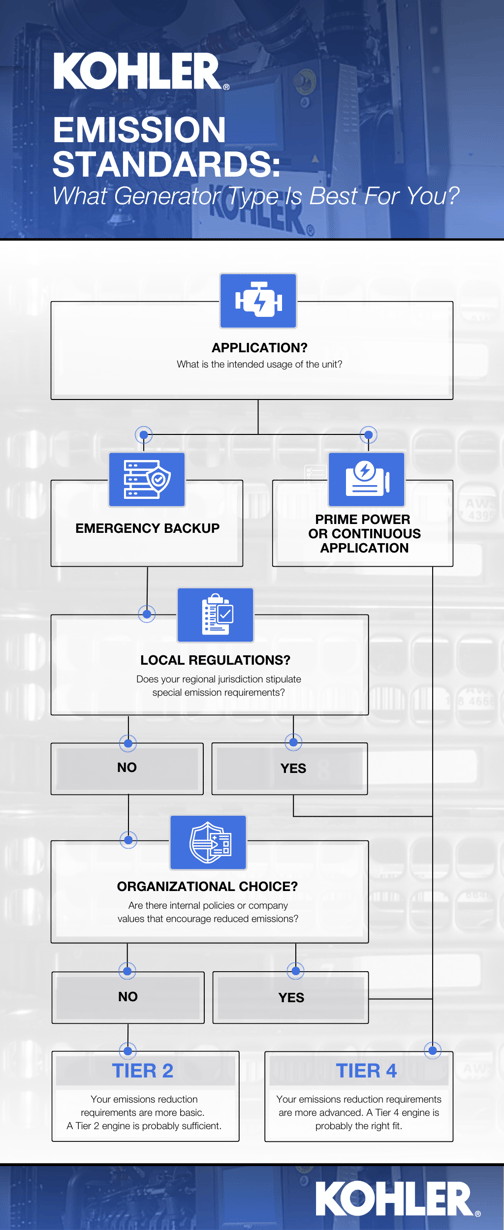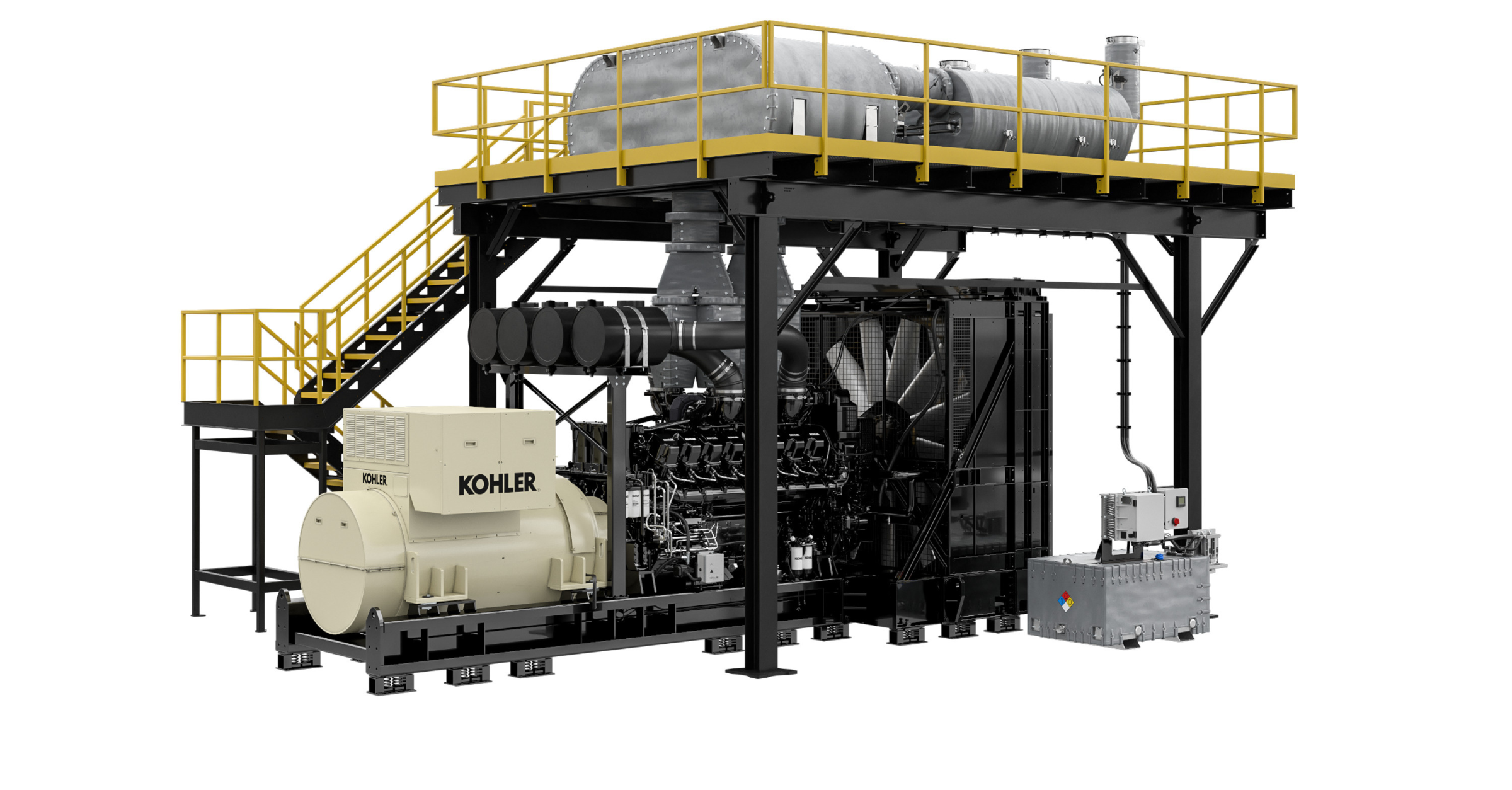Emission Standards For Data Centers: A Decision Making Guide
Meeting the stringent emissions regulations is important, but navigating the rules and jargon around emission standards can be intimidating. What’s the difference between Tier 4 final and Tier 4 interim? What exactly is RICE NESHAP? What about uninterruptible power supplies? Why does it need to be so difficult?
Kohler has it covered. Cutting right to the most important points, we’ve simplified the information into three straightforward questions to guide data centers as they navigate emission standards to select the backup generator type right for them—either Tier 2 or Tier 4, no need to worry about the rest.

- What is your intended application?
The first thing it’s important to be clear about is the way your generator will be used. Is it for emergency or non-emergency use? Will it be stationary or mobile? Will it be used for peak shaving, or load shifting? Are there any arrangements with local utility companies about going off grid in overload situations? This discussion can have major ramifications on the generator you choose. At the most basic level, if a unit is for emergency standby use then Tier 4 is not required. Alternatively, if a unit’s application is prime power then that usage requires Tier 4.
Another reason the generator’s intended purpose is important lies in the difference between Tier 4 compliant and Tier 4 certified. Let’s quickly review the applicable New Source Performance Standards (NSPS for CI engines). In a nutshell, Tier 4 certified equipment has been pre-qualified by the manufacturer, and meets all valid requirements straight out of the factory. Tier 4 compliant equipment, by comparison, meets the requirements by being modified after the fact, and inspected in the field. Although Tier 4 compliant generators meet the standard, they can never be Tier 4 certified. The reason this matters is because some use types stipulate different emission standards. For example, many government demand response programs will only accept participants with Tier 4 certified equipment. Demand response programs can be very profitable for data centers, but if the organization may be interested in joining one then that possibility must be decided at the time the generator is acquired, as retrofitted equipment just won’t work. - What are your local regulations?
The next question to ask is about location-specific regulations. Understanding local regulations at a base level allows data centers to know what to watch out for, and can affect the type of generator they choose. Beyond nationally-applied regulations, some data centers may need to consider meeting regulations based around their local jurisdictions. Under the National Ambient Air Quality Standard (NAAQS), the EPA’s regional air monitoring system creates designated zones called non-attainment areas, where emissions levels are regulated more strictly.
Additionally, a data center location could have local regulation standards not related to the EPA. For example, California has designated areas called Air Quality Management Districts (AQMD) to be aware of. Some areas also have restrictions specific to certain pollutants, not just emissions generally. For instance, the Virginia Department of Environmental Quality has special standards when it comes to regulating nitrous oxides (NOx). Other states or counties may be far stricter than others in regard to restricting particulate matter (PM), hydrocarbons (HC), or carbon monoxide (CO). - What are your organizational sustainability objectives?
The final area to consider is internal and ethical rather than external and administrative. Many companies have environmental, social, and corporate governance (ESG) policies to follow. Others may have corporate social responsibility (CSR) goals to strive for. Still, others may have team or departmental initiatives to guide them. Any of these factors can influence a decision to approach emissions differently.
Less formally, it’s important for companies to closely establish their values, because sometimes the right thing to do is to strive for lower emissions regardless of outside forces. If it’s important to make a choice that is as clean and sustainable as possible, this will undoubtedly play into a data center’s decision making, so those principles should be carefully taken into account.
Learn More
To take a deeper dive into emission standards for diesel generators, check out our white paper here. Or, to read about which data center emission metrics to keep an eye on, check out our beginner’s guide to measuring data center emissions here.
